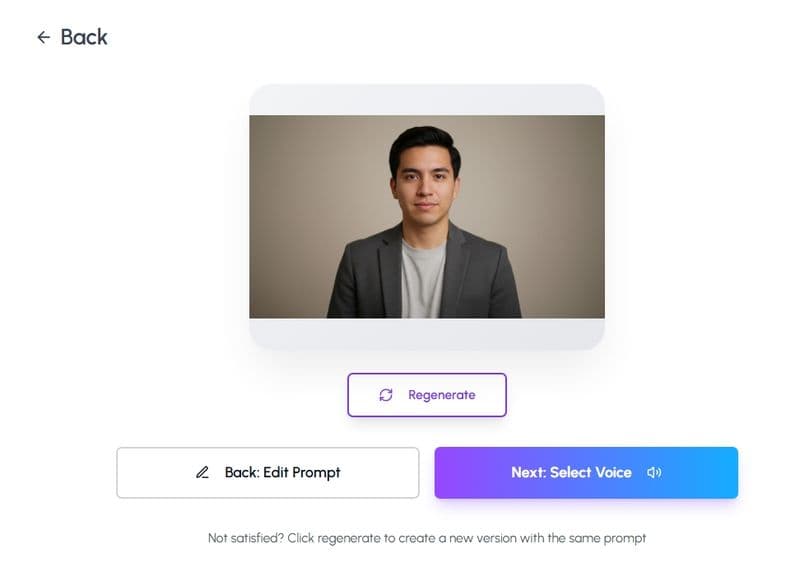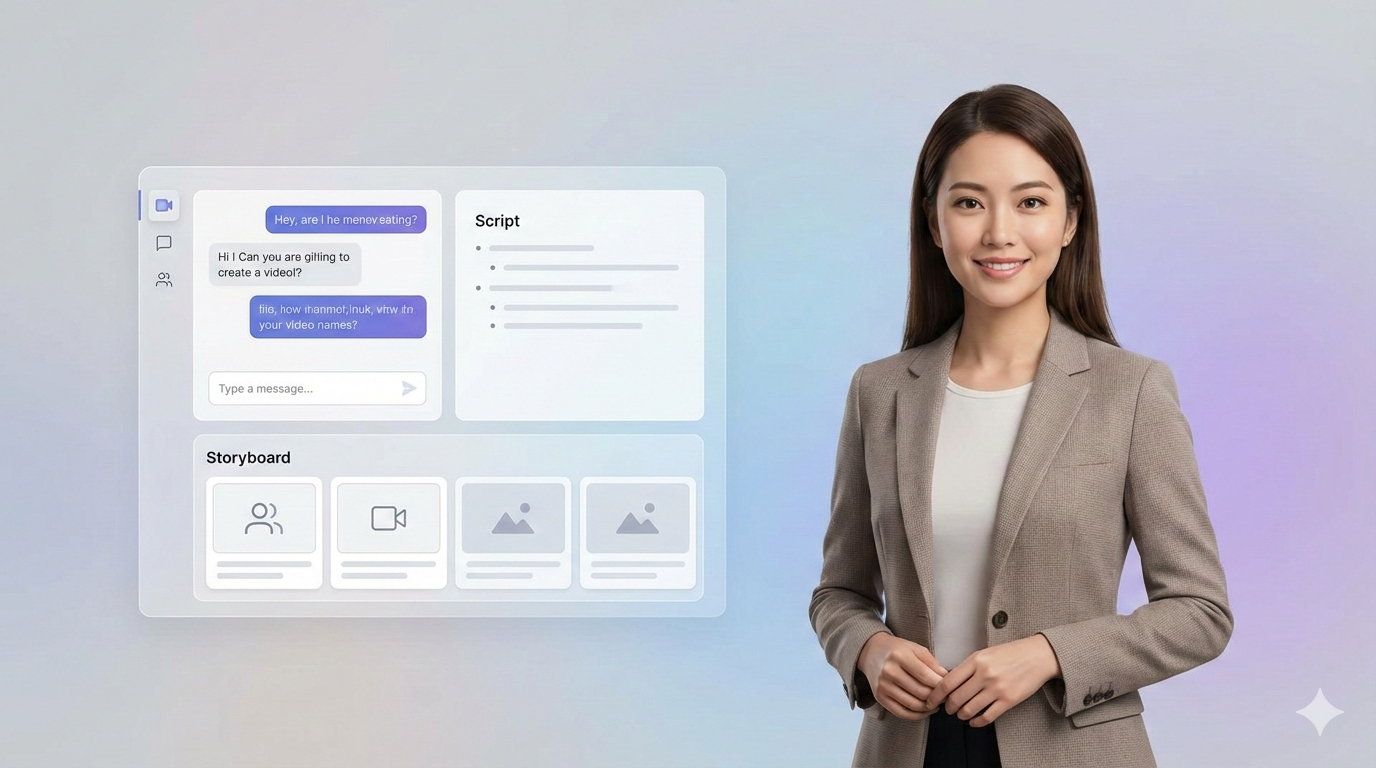Should you clone yourself as an AI avatar? It’s a question more founders are asking as AI promises to scale communication, automate support, and extend personal brand presence. What once sounded like sci-fi is now a strategic decision: to replicate your voice, tone, and presence across platforms using AI. This article explores when building an AI avatar makes sense, what to watch out for, and how to align it with your growth goals.

TL;DR: Should You Build a Founder AI Avatar? Here’s the Short Answer
More founders are creating AI avatars to scale their presence, automate conversations, and stay visible across platforms without burning out. This article breaks down when it makes sense to build one, how to measure real impact, and what pitfalls to avoid.
AI avatars can now:
- Speak in your voice, mirror your expressions, and respond with emotional nuance.
- Handle onboarding, support, and investor pitches in multiple languages.
- Remember context and personalize conversations across touchpoints.
To measure success, look for:
- Longer session times, repeat engagement, and natural feedback.
- Time saved on re-recordings, support, or outreach.
- Clear conversion signals like second meetings or faster sign-ups.
Before you launch, check for:
Uncanny behaviors of avatar that might feel off
Scripts that sound like marketing, not like you
Gaps in privacy compliance or brand alignment
Takeaway:
An AI avatar isn’t just a video tool. It’s a way to multiply the founder’s presence without diluting their voice. When people feel like they met you, even when you weren’t there, that’s when it’s working.
How Can Founders Measure Success with their AI Avatar?
As AI avatars evolve from novelty to strategic tools, the question for founders shifts from “Should I create one?” to “Is it working?” Measuring the impact of your AI avatar goes beyond vanity metrics like views or likes, it’s about gauging tangible business outcomes: engagement, efficiency, revenue, and trust.
Here’s how founders can accurately measure the success of their AI avatars:
Founder-Led Engagement
Your avatar isn't just speaking for you, it is you. So, ask: are people staying, listening, engaging?
Session duration and repeat viewership help you understand if your avatar captures attention like a real conversation.
Completion rates on avatar-led content reflect clarity, tone, and message resonance.
Look for qualitative signs, too: Do people comment as if they’re talking to you? Are they sharing it onward?
Time and Cost Efficiency
Your avatar should free you up, not box you in. The best indicator of success? The time and resources you don’t spend.
Are you producing more videos or communication updates than before?
Have you reduced the need to re-record messages or do live explainers?
Is your avatar being reused across platforms: onboarding, pitch decks, FAQs?
Business & Conversion Impact
Whether you’re using your avatar in investor follow-ups, product walkthroughs, or recruitment messages—measure outcomes, not just impressions.
Are people taking action after interacting with your avatar?
Are leads becoming customers, or investors asking for second meetings?
If embedded in a sales or demo flow, is avatar content increasing clarity or reducing drop-off?
Brand Sentiment & Feedback
Your avatar is a mirror of your tone, presence, and credibility. Success here shows up in how people feel when they “meet” you digitally.
Collect feedback post-interaction. Did they find it authentic? Engaging? Useful?
Monitor comments or message replies: Are they aligned with how people talk to you directly?
Track mentions or reactions on social, are people tagging you when they share avatar-led content?
Localization & Global Reach
Your avatar can speak more languages than you can. That’s not just cool, it’s strategic.
Use analytics to see where new engagement is coming from. Are you reaching new geographies or communities?
If you deploy in multiple languages, compare viewer behavior across versions—what’s landing well where?
Check whether localized avatar content is reducing reliance on live translation or support.
Success doesn’t look like a million views. It looks like saved hours, better conversations, and new doors opening, without you having to knock. Your AI avatar should extend your leadership, not dilute it. When users feel like they’ve met you, trusted you, and learned from you, even when you weren’t there, that’s when you’ll know: it’s working.
AI Avatar Risks and Readiness Check
Not every AI avatar belongs in the outside world. While the tech is powerful, deploying it without intention can backfire, making your brand feel flat, forced, or even a little uncanny. Here’s what to consider before hitting publish:
The Uncanny Valley is Real
When avatars look almost human, but not quite, it can create discomfort. If your audience is wincing instead of watching, the realism has gone too far. Choose relatability over hyper-realism.
Tip: Test early with trusted users. Watch for subtle cues, awkward pauses, quiet exits, confused expressions. If your avatar feels weird, it probably is.
Your Voice Still Matters
Just because the avatar can speak for you doesn't mean it should say anything. Scripts need to reflect your actual tone, values, and pacing. An AI avatar isn’t a replacement, it’s an extension.
Ask yourself: Does this sound like something I’d actually say in a room full of people I care about?
Privacy and Data Compliance
If your avatar collects user data or answers personalized questions, you’re responsible for how that information is stored and handled.
Make sure your tools are GDPR compliant, like Personate AI.
Include disclaimers when using avatars in sensitive use cases.
Consider conducting a DPIA (Data Protection Impact Assessment) before launch.
Update or Become Outdated
Your company evolves. Your messaging evolves. So should your avatar.
Best practice: Set a quarterly review process. Refresh scripts. Tune performance. Rotate visual assets. Your avatar needs care if it’s going to stay compelling.
Don’t Let the Avatar Lead the Brand
Your avatar is a channel, not the product. It should reflect what’s already true about your brand, not pretend to be something it isn’t. If it’s polished, but your customer experience isn’t, that disconnect will show.
Your AI Avatar Playbook
So you’ve decided to build an AI avatar. What now?
This isn’t about plugging in a tool and hitting record. A great avatar reflects how you think, speak, and show up when it matters. It carries your tone, your timing, and your trust. That takes intention.
Here’s how to do it right—from build to launch.
Step 1: Define the Job
Before you design the look, define the why.
Is your avatar onboarding new users?
Explaining your product to investors?
Handling FAQs in support?
Pitching customers while you sleep?
Clarity here drives every decision that follows. A helpful avatar is a focused one.
Step 2: Choose the Right Voice
The best avatars don’t sound like AI. They sound like you on your best day.
Decide early:
First-person or third-person voice?
Friendly and informal, or polished and direct?
Jokes? Pauses? Parentheticals?
If you’re not sure, record yourself explaining your product to a friend. That’s the baseline.
Step 3: Script for Conversation, Not Performance
Writing for avatars is like writing for podcasts,it should feel spoken, not staged.
Avoid:
Long blocks of dense copy.
Over-polished corporate speak.
Monotone delivery.
Lean into:
Short sentences.
Natural phrasing.
Breaks, breath, rhythm.
Step 4: Design the Face and Format
Now comes the visual. Keep it brand-aligned, but avoid going too photorealistic unless your audience expects it.
Choose:
Static head-and-shoulders? Full-body? Animated?
Background style: branded, neutral, transparent?
Clothing and expression that reflect your tone
Tip: Test it on mobile. A great avatar on a desktop can fall flat on a phone screen.
Step 5: Test in a Low-Stakes Context First
Don’t roll out on your homepage first thing. Start small.
Embed in a Notion pitch deck
Use in internal onboarding
Add to investor update emails
Watch how people react. Adjust accordingly. Then scale.
Step 6: Measure What Matters
Don’t chase vanity views. Track:
Viewer completion rates
Time saved by your team
Actions taken after avatar interactions
Feedback that feels personal
Your avatar should make users feel like you showed up for them, even when you didn’t.
Founder AI Avatar Readiness Checklist
Are you ready to launch an AI avatar that actually works for your brand?
Run through these 10 questions. If you're checking most of them, you're ready to build.
Strategy
☐ I know what job my avatar needs to do (onboarding, support, pitch, content)
☐ I’ve defined my avatar’s tone, voice, and ideal speaking style
☐ I understand where it will live (site, app, deck, email, etc.)
Content
☐ I have existing scripts, messaging, or videos to draw from
☐ I’m ready to write in my natural voice, not just my professional one
☐ I know how to measure if people are engaging (watch time, conversions, replies)
Design & Deployment
☐ I’ve thought through how I want the avatar to look and move
☐ I’ve chosen a low-risk space to test before scaling
☐ I’ve checked for mobile responsiveness and load times
Readiness
☐ I’m prepared to update and refine the avatar over time
☐ I’ve reviewed privacy and compliance requirements for user data
☐ I see this as an extension of myself, not a replacement
Score:
9–12 checks: Let’s build. You’re ready.
6–8: You’re close—just fine-tune the strategy or content plan.
<6: Pause and clarify your goals before launching.
Reminder: You don’t need to be perfect. You just need to be present. The avatar helps with the rest.
This Is About Presence, Not Perfection
You don’t need to build the most advanced avatar on day one. You just need to build one that sounds like you, serves your users, and earns trust on your behalf.
Start where it’s low-pressure. Grow into where it matters. And remember, this is not a replacement for your voice. It’s a way to give it more places to be heard.
Thinking about building your digital twin? We’d love to hear what you're exploring. Drop us a note at hello@personate.ai or reach out via our Get in Touch page.


